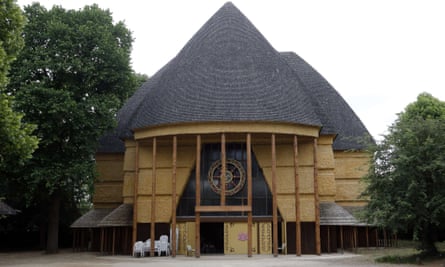Hidden in a wood on the outskirts of Paris is an African pavilion-turned-pagoda that houses the largest Buddha in Europe, made in the Paris atelier of the Spanish artist Joan Miró.
The Grande Pagode is an eclectic cultural, religious and artistic treasure, but most of those strolling and jogging around the Lac Daumesnil in the Bois de Vincennes, do not even know it is there.
Now France’s Buddhist community, which celebrated the reopening of the pagoda this weekend after a €1m (£720,000) facelift, is hoping to attract new visitors.
Unveiling the renovated listed building, Liliane Lefait, administrator of the French Buddhist Union – an umbrella group for several Buddhist organisations set up following the waves of immigration from Vietnam and south Asia in the 1960s – said: “This place is open for everyone and anyone to visit. It’s a very calming, peaceful place. I feel calm just coming here, even without praying.”
Despite it being 28 metres (92ft) high, you cannot see the pagoda for the trees. It was originally built in 1931 as the Cameroon pavilion for the international colonial exhibition and was constructed to resemble a traditional African home – but three times the size – using long-established materials and decorations.

When the exhibition closed, most of the buildings were torn down, but the Cameroon pavilion and neighbouring Togo building, both constructed of wood, were left standing.
The pavilion briefly became the Museum of Wood, before the site was acquired by France’s International Buddhist Institute and transformed into the Grande Pagode, home to the 10-metre-high (33ft) golden buddha statue, which was created in six parts in Miró’s atelier and reassembled in situ.
Lost among the foliage, the building fell slowly into disrepair over the past four decades until the Paris city authorities acquired the site and came up with the funds to renovate it.
“The Asian members of the Buddhist community were quite zen about it even though it really is an important place for them to meet and share occasions. But when holy people came from Asia, where they have wonderful pagodas that are well-kept and decorated, they were shocked at the state of ours,” Lefait told the Guardian. “Now we are absolutely delighted with it.”
The pagoda is open intermittently from April to October on holiday weekends.
